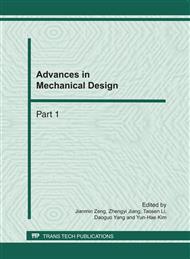p.1874
p.1880
p.1885
p.1890
p.1896
p.1901
p.1906
p.1912
p.1916
Subassembly-Centered Product Assemblability Analysis Method
Abstract:
An assemblability evaluation system of products including parts and subassemblies was presented. The necessity about assemblability evaluation for subassemblies was discussed. A subassembly-centered product assemblability analysis method was proposed. The two-step assemblability analysis flow including process step and entire step about subassembly was designed, which can analyze structure of subassembly when it was assembled and fitted on product. A web-based prototype system of subassembly-centered product assimilability evaluation which supports multi-sited collaborative design was developed with Java/JSP, which integrated with the platform of collaborative assembly planning and collaborative assembly simulation. Finally, an example was used to validate reasonability of subassembly assemblability analysis method and the effectiveness of the evaluation system.
Info:
Periodical:
Pages:
1896-1900
Citation:
Online since:
February 2011
Authors:
Keywords:
Price:
Сopyright:
© 2011 Trans Tech Publications Ltd. All Rights Reserved
Share:
Citation:


